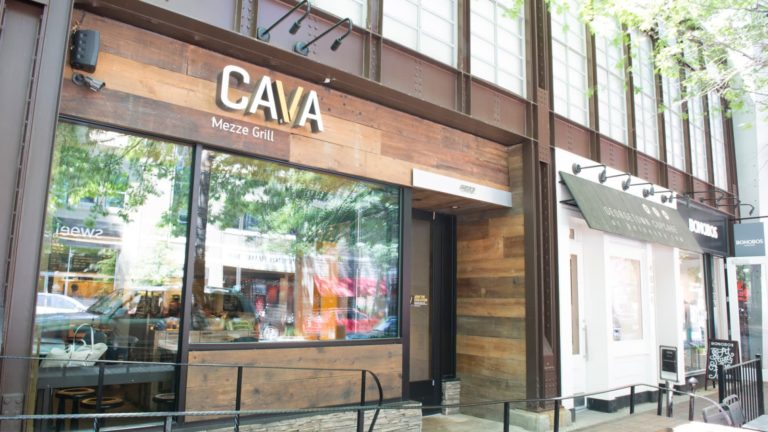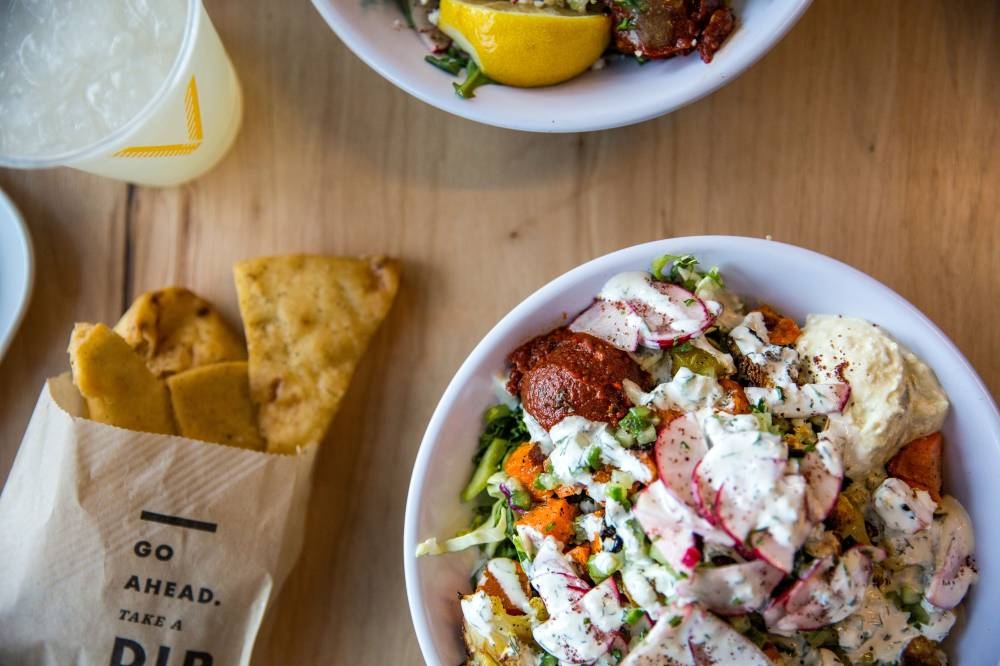
At 1,700 square feet and a full-service Mediterranean restaurant, Rockville’s first Cava Mezze was a modest beginning for the company. The restaurant was founded in 2006 by three friends, with another joining as CEO three years later.
Cava Grill is now a fast-casual business with 24 sites on the East Coast and Los Angeles, and 18 more are expected to launch in the next year. According to a press release issued in late March, Cava Grill has secured $30 million in Series C investment (raising the total to $90 million).
Now, let’s have a look at the amazing Cava nutrition facts chart in detail.

Contents
Cava Calories
The calorie count varies according to the product name. The precise values may be seen below. Let’s try to understand the calorie content in different products of cava.
- Base, Grain Bowl 5 oz – 250 calories
- Ground, Greens & Grains 4 oz – 130 calories
- Base, Mini Pita 1 oz – 110 calories
- Base, Pita 3 oz – 230 calories
Here’s a more detailed chart on Cava nutrition facts for reference.
Some Fantastic Cava Nutrition Info And Facts
- Cava was founded by restaurateurs Ted Xenohristos, Ike Grigoropoulos, and Dimitri Moshovitis in Maryland and Washington, DC, around a decade ago. Brett Schulman, a team buddy, quit his position as VP of Deutsche Bank to become CEO of Cava a few years later.
- According to Schulman, their goal has always been to provide classic Mediterranean cuisine in a contemporary American style.
- A limited-service company, Cava Grill’s staff works in an assembly line fashion, allowing customers to personalize their dish and take it to go or sit down for a meal. There are hummus and pita, falafel, and spicy lamb meatballs on the menu for $8 to $11, with an average of 500 calories in each dish. Cost and caloric content are comparable to Chipotle’s.
- The healthy fast-casual trend was gaining popularity at the same time that both businesses were founded. Healthy fast-casual foods have expanded by 550 per cent since 1999, more than ten times the growth of the fast-food industry.
- As a result of its partnerships with suppliers, Cava can keep pricing low, says Schulman. The business may reduce transportation expenses to its kitchens by collaborating with local farmers and ranches. Every element needed by the firm for the coming week or month is forecasted accurately by the company’s data science team.
- As a result, a farm may provide the chain with the precise quantity of goods it needs (for example, tomatoes) at a lower price than it would otherwise be able to. If a supplier can’t foresee what merchants need and produces too much, they risk wasting crops.
- It is not always the case that Cava collaborates with local farmers. It’s practically hard, according to Schulman, to locate locally grown in-season tomatoes and cucumbers on the East Coast throughout the winter, so the company imports them. The corporation uses many greenhouses to produce vegetables year-round near its restaurants.
- As a result, the chain can save money by using an assembly line model (instead of a full-service restaurant, it does not require waiters). After launching a mobile ordering platform in January, the company has also seen an increase in the number of clients it serves in less time and with fewer employees.
- There are sensors in every restaurant that monitor everything from food safety to how long customers wait for meals and how much time they spend eating once they’re seated. The data science team’s primary mission is to manage this system of sensors. A variety of elements, including the position of consumers, the temperature, and the noise level, are monitored by sensors at each site.
- Using sensors near the assembly line, the team discovered that while consumers are trying to decide what to get, they prefer to gather around the menu board.
- A new menu board was hung in the centre of the waiting area to inform the public of their options. Faster lines have resulted from the adjustment. According to the data science team, there is a greater tendency for suburbanites to remain in the sitting area than city dwellers (the sensors located underneath seats are weight and motion-sensitive). Josh Patches, Cava’s chief data scientist, recommended boosting suburban seating by 30 per cent.

Some Additional Cava Nutrition Facts You Should Take Care Of
- These eateries saw a per-square-foot increase in income of 20 per cent after the renovations. Sensors will automatically adjust the music level if too crowded during peak periods.
- As far as we’re concerned, we’re looking at technology from a humanistic perspective,” Schulman adds. If we were saying, “Hey, we’re going to go buy a lot of robots and replace our team members,” then we would be saying something very different.”
- We plan to leverage technology to improve the tourist experience and make operations more efficient. “
- One of the company’s most significant problems will be ensuring that its cuisine and dining experiences remain genuine as it grows.
Bottom Line
Cava is a type of sparkling wine that originates from Spain. It is typically made using the traditional method of secondary fermentation in the bottle, which gives it its characteristic bubbles and dry taste. In terms of nutrition, a glass of cava typically contains around 100-120 calories, depending on the size of the serving. It also contains a moderate amount of alcohol, with an average of 11% alcohol by volume. Cava is made from a blend of grapes, typically Macabeo, Xarel-lo, and Parellada, which provide small amounts of vitamins and minerals. While cava can be enjoyed as a special occasion beverage, it should be consumed in moderation as part of a balanced diet.